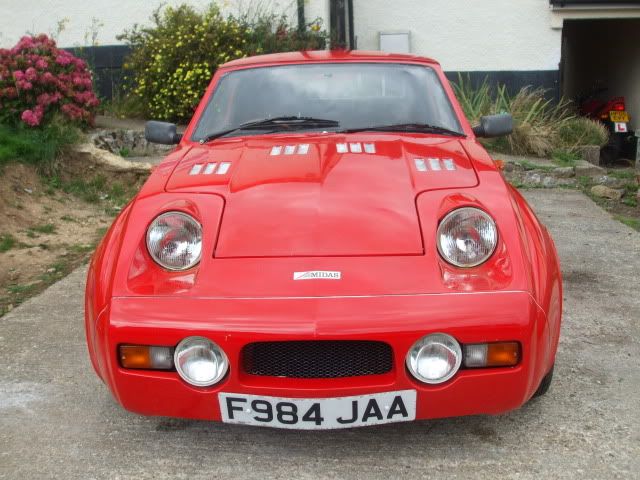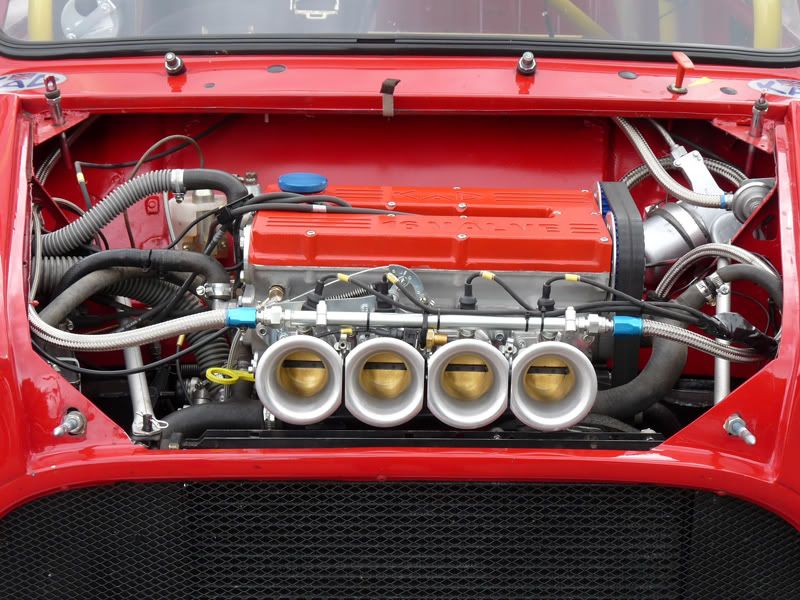Jin wrote:benofbrum wrote:Justin, your Cortez had new rear units installed in Autumn 2009 after one of the rusty originals sprung a leak and lost all the fluid while on holiday in France. The air (nitrogen?) pressure in them is therefore as it should be. .
i know mate, thats why im a bit puzzled regarding the bouncyness of the rear end, any longer than 10 mins behind the wheel and i feel sea sick
I suspect that the mismatch between the old units at the front and the new ones at the rear is at the root of the problem.
In a properly operating set up, when the front wheel hits a bump, most of the wheel travel is taken up by the gas spring compressing, but some of it is taken up by the fluid being pushed to the back.
This is the classic drawing that explains how hydragas works showing a Metro, Allegro, or whatever with the front wheel going up a bump and the rear rising to keep the car level - oh look this ones an MGF!
The flow of fluid to the rear is restricted, to ensure that the front spring does some work and also to provide some damping to prevent the car rocking backwards and forwards.
I suspect that in your case the front gas springs have lost most of their Nitrogen and so have become very stiff, as Hans explained above. Therefore, when you hit a bump most of the travel is provided by fluid being displaced rearwards. This is will be the reason why you are finding the ride uncomfortable.
Unfortunately, new front hydragas units are pretty rare now. Rear ones are easier to find and I have some in stock, but that is of little use to you. The alternative is to recharge them, which is the Schrader valve mod also mentioned above.
The problems with the units leaking fluid is different to them losing Nitrogen gas. The Nitrogen loss is due to osmosis: the Nitrogen gas is held under pressure so it is natural for the molecules to attempt to escape.
The top part of the unit is steel so as long as it hasn't rusted through the gas finds it very hard to penetrate - I could go on about rusted hydragas units, but it does make me wonder when I look under people's cars and see rust encrusted hydragas units.
Below the gas is the rubber separator diaphragm. In this environment, with Nitrogen above and an anti-freeze style fluid below, the rubber won't perish, but it still a natural polymer and over time the Nitrogen molecules will slowly penetrate - we are talking about 15 to 20 years here. The Nitrogen just becomes bubbles in the fluid below and the car sinks down lower.
Below the rubber separator is the fluid section. This also has a rubber diaphragm at the other end that is moved by the suspension knuckle. This diaphragm is much more vulnerable to damage. At the bottom of the unit the should be a rubber cover to keep dirt and grit out. If this is missing then the rubber diaphragm will be vulnerable to damage. This is particularly important at the rear, where the hydragas unit is laid horizontally. Any thing that finds its way in, like bits of grit will just sit there abrading the rubber diaphragm.
So long as the correct grade of fluid is used the units won't rust from the inside. Similarly the rubber won't fail on its own, only if some foreign matter has been allowed to get in and wear through it. So clean the rust off the hydragas units and give them a lick of paint and make sure the rubber skirt is in place when you put them back on.
On the whole I have had good experiences with Hydragas sprung cars and if anyone doubts that I would invite them to come for a ride in my Excelsior. David Johnson took up the offer at MWAD and was quite impressed with the way it went around Castle Combe. I have driven and ridden in Golds with full hydragas and half hydragas and can say that I have experienced good and bad examples of both. My view is that they need to be fairly soft at the back and well damped at the front. I have yet to ride in a good one which didn't have additional front dampers.


